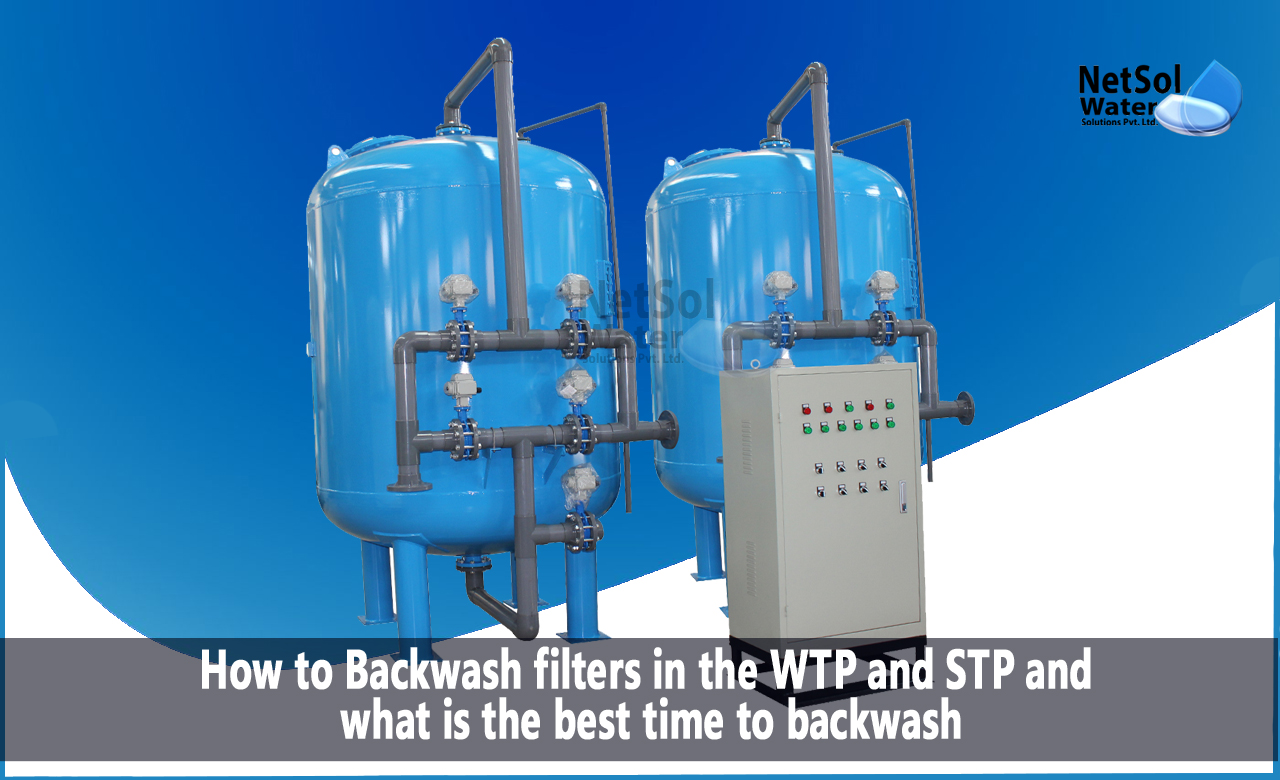How to Backwash filters (ACF & MGF) in the WTP and STP?
Backwashing is a procedure that is employed in the treatment of water and wastewater to pump water backwards by means of filter media, involving anything placed in a filter which alters the quality of water passing through it. This procedure is a sort of preventative maintenance that makes use of compressed air intermittently so that filter media can be reused.
It is the most crucial maintenance procedure for a bed with a granular medium, which might be activated carbon, sand, zeolite, ion exchange resin, or multimedia beds. Backwashing granular beds is essential for a number of significant reasons that aren't usually obvious to the naked eye. The most significant ones among them are:
1. Remove the solids retained between the granules in the middle. The quantity of suspended solids in the water being treated, the size distribution of these solids (granular media beds retain solids over a particular size), and the amount of water treated since the last backwash will all affect how much of these solids are present.
2. Eliminate excessive biomass. This is generated in all activated carbon beds. Both the trapped sediments and the bacteria clog the bed as they multiply.
3. When the adsorber is operating in down-flow, it eliminates bubbles that occur as a result of temperature fluctuations or air entrapment and become stuck in the bed. The flow is channeled because bubbles block the area of the bed where they are located.
4. Refrain from cementing or petrifying the bed. This is because the water contains specific chemicals that cause particles to adhere to one another. Calcium carbonate, biomass, and specific types of natural organic matter are a few examples of some of these. Almost all adsorbers have this effect, however downflow adsorbers are more affected because of the pressure of the water in the bed.
Backwashing is most effective when there is adequate expansion of the filter bed. In order to accomplish this, water must flow upward at a rate high enough to fluidize the media bed, which widens the gap between the media grains and causes the media to "expand," or take up more space. The filter bed is said to have fluidized at this point. Fluidization encourages medium grain collisions, which removes surface encrustations.
How to Backwash filters in the water treatment plant?
Media filters must undergo a number of stages during backwashing. The water is first drained to a level that is above the filter bed once the filter has been taken offline. Then, compressed air is forced up through the filter material, expanding the filter bed and driving the accumulated particles into suspension. This process breaks apart the compacted filter bed. Clean backwash water is driven upward through the filter bed to continue the filter bed expansion after the air scour cycle, transporting the suspended particles into backwash troughs hanging above the filter surface. In some applications, the granular media is passed through with both air and water streams at the same time, followed by a rinse water wash. Backwashing continues for a predetermined period of time or until the water's turbidity falls below a predetermined level. The upward flow of water is stopped at the end of the backwash cycle, and the filter bed gravitationally returns to its initial position. Once the filter clogs and the backwash cycle needs to be repeated, more water is applied to the filter surface.
Surface wash systems are used by some water treatment filters to remove the badly blocked, granular media surface layer. Surface wash systems are either suspended above or buried in the surface of the filter medium. Rotating arms rotate a movable arm through the filter material while using water jets to dislodge the clogged filter surface. Usually, the first step in cleaning the filter bed is a surface wash phase in a backwash cycle.
Backwashing filters in wastewater treatment plants:
Backwashing can be either continuous or semicontinuous. By pumping clarified water below the sand filter and sucking it out from the top with a different pump, semicontinuous backwashing is accomplished. Backwash water is released for reprocessing into the main distribution inlet header. A semicontinuous pulsed-bed filter uses air from the blower. Backwashing starts when pressure builds up and the suspended solids in the effluent stop filtering to an appropriate level of the head.
Continuous backwashing is an up-flow, moving bed filter that is built with various media depths for numerous applications and arrangements. Raw water enters the tank towards the bottom, and as it rises through the media bed, suspended solids are filtered out. Filtrate is discharged as it crosses the effluent weir and reaches the top of the filter. To clean and move the waste solids, a portion of the filtrate is directed via the sand washer.
Do you need an advice or assistance on selecting the best water and waste water treatment unit? We have solutions for all your problems!
Let us now your problem, our experts will make sure that it goes away.
For an assistance or related query,
Call on +91-965-060-8473
Or write us at enquiry@netsolwater.com



